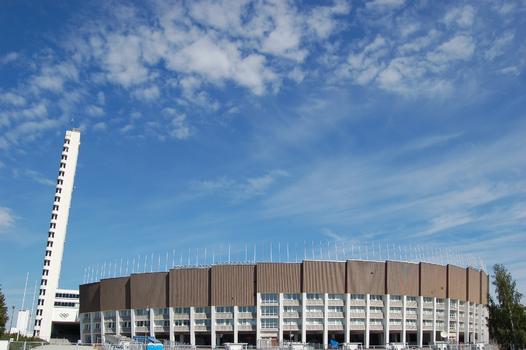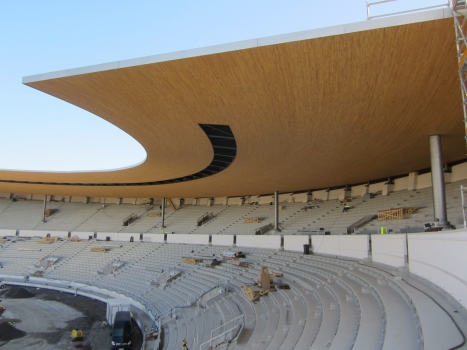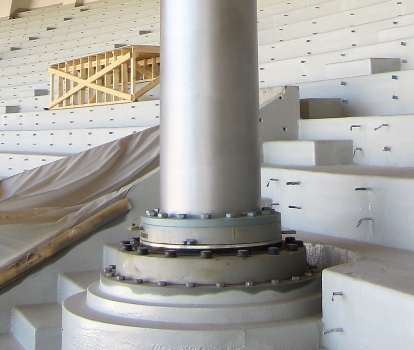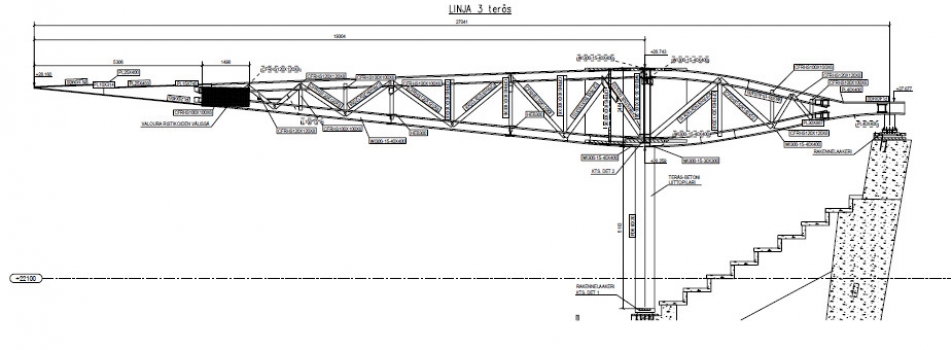General Information
| Name in local language: | Helsingin Olympiastadion |
|---|---|
| Beginning of works: | 12 February 1934 |
| Completion: | 12 June 1938 |
| Status: | in use |
Project Type
| Function / usage: |
Stadium / Arena |
|---|---|
| Material: |
roof: Steel structure |
| Structure: |
roof: Horizontal cantilever structure roof: Truss |
Location
| Location: |
Helsinki, Uusimaa, Finland |
|---|---|
| Part of: | |
| Near: |
Helsinki Olympic Stadium Tower (1938)
|
| Coordinates: | 60° 11' 13" N 24° 55' 38" E |
Technical Information
Materials
| roof truss |
steel
|
|---|
Case Studies and Applied Products
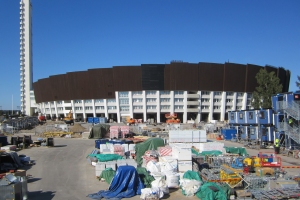
Special bearings for the modernized Helsinki Olympic Stadium
The listed Olympic Stadium in Helsinki is being modernized which includes the addition of a new roof that covers the stands around the entire oval. This required the development of new bearings that can transfer both compressive and tens ... [more]
Excerpt from Wikipedia
The Helsinki Olympic Stadium (Finnish:Helsingin Olympiastadion; Swedish:Helsingfors Olympiastadion), located in the Töölö district about 2.3 kilometres (1.4 mi) from the centre of the Finnish capital Helsinki, is the largest stadium in the country, nowadays mainly used for hosting sports events and big concerts. The stadium is best known for being the centre of activities in the 1952 Summer Olympics. During those games, it hosted athletics, equestrian show jumping, and the football finals.
The stadium was also the venue for the first Bandy World Championship in 1957, the first World Athletics Championships in 1983 as well as for the 2005 World Championships in Athletics. It hosted the European Athletics Championships in 1971, 1994 and 2012. It is also the home stadium of the Finland national football team.
The stadium has been closed since March 2016 for renovation works and is scheduled to open in August 2020.
History
Helsinki Olympic Stadium in 1938 soon after its completion. The stadium, first built for the 1940 Olympics, had to wait until 1952 for its intended use as an arena for the Olympic games as the war led to the cancellation of the event.
The Olympic Stadium was designed in functionalistic style by the architects Yrjö Lindegren and Toivo Jäntti. Construction of the Olympic Stadium began in 1934 and it was completed in 1938, with the intent to host the 1940 Summer Olympics, which were moved from Tokyo to Helsinki before being cancelled due to World War II. It hosted the 1952 Summer Olympics over a decade later instead. The stadium was also to be the main venue for the cancelled 1943 Workers'' Summer Olympiad.
It was the venue for the first-ever Bandy World Championship in 1957.
The stadium was completely modernized in 1990–1994 and also renovated just before the 2005 World Championships in Athletics.
In 2006 an American TV series, The Amazing Race 10, had one of its episodes ending at The Olympic Stadium Tower. As a task, teams had to do a face-first rappel (known as the Angel Dive) down the Helsinki Olympic Tower.
Since March 2007, a Eurasian eagle-owl has been spotted living in and around the stadium. On June 6, 2007, during a Euro 2008 qualifying match, the owl delayed play by ten minutes after perching on a goalpost. The owl was later christened Bubi and was named as Helsinki''s Resident of the Year.
The 50th anniversary of the Helsinki Olympic Games hosted in the Helsinki Olympic Stadium was the main motif for one of the first Finnish euro silver commemorative coins, the 50th anniversary of the Helsinki Olympic Games commemorative coin, minted in 2002. On the reverse, a view of the Helsinki Olympic Stadium can be seen. On the right, the 500 markka commemorative coin minted in 1952 celebrating the occasion is depicted.
Features
The tower of the Helsinki Olympic Stadium, a distinct landmark with a height of 72.71 metres (238.5 ft).
The stadium''s spectator capacity was at its maximum during the 1952 Summer Olympics with over 70,000 spectator places. Nowadays the stadium has 40,600 spectator places. During concerts, depending on the size of the stage, the capacity is 45,000–50,000.
The tower of the stadium, a distinct landmark with a height of 72.71 metres (238.5 ft), a measurement of the length of the gold-medal win by Matti Järvinen in javelin throw of 1932 Summer Olympics, is open for visitors and offers impressive views over Helsinki. It is possible to see into the adjacent Telia 5G -areena.
A Youth Hostel is located within the Stadium complex.
Text imported from Wikipedia article "Helsinki Olympic Stadium" and modified on April 20, 2020 according to the CC-BY-SA 4.0 International license.
Participants
- Yrjö Lorenzo Lindegren (architect)
- Toivo Jäntti (architect)
Relevant Web Sites
- About this
data sheet - Structure-ID
20022675 - Published on:
25/08/2006 - Last updated on:
11/12/2019

